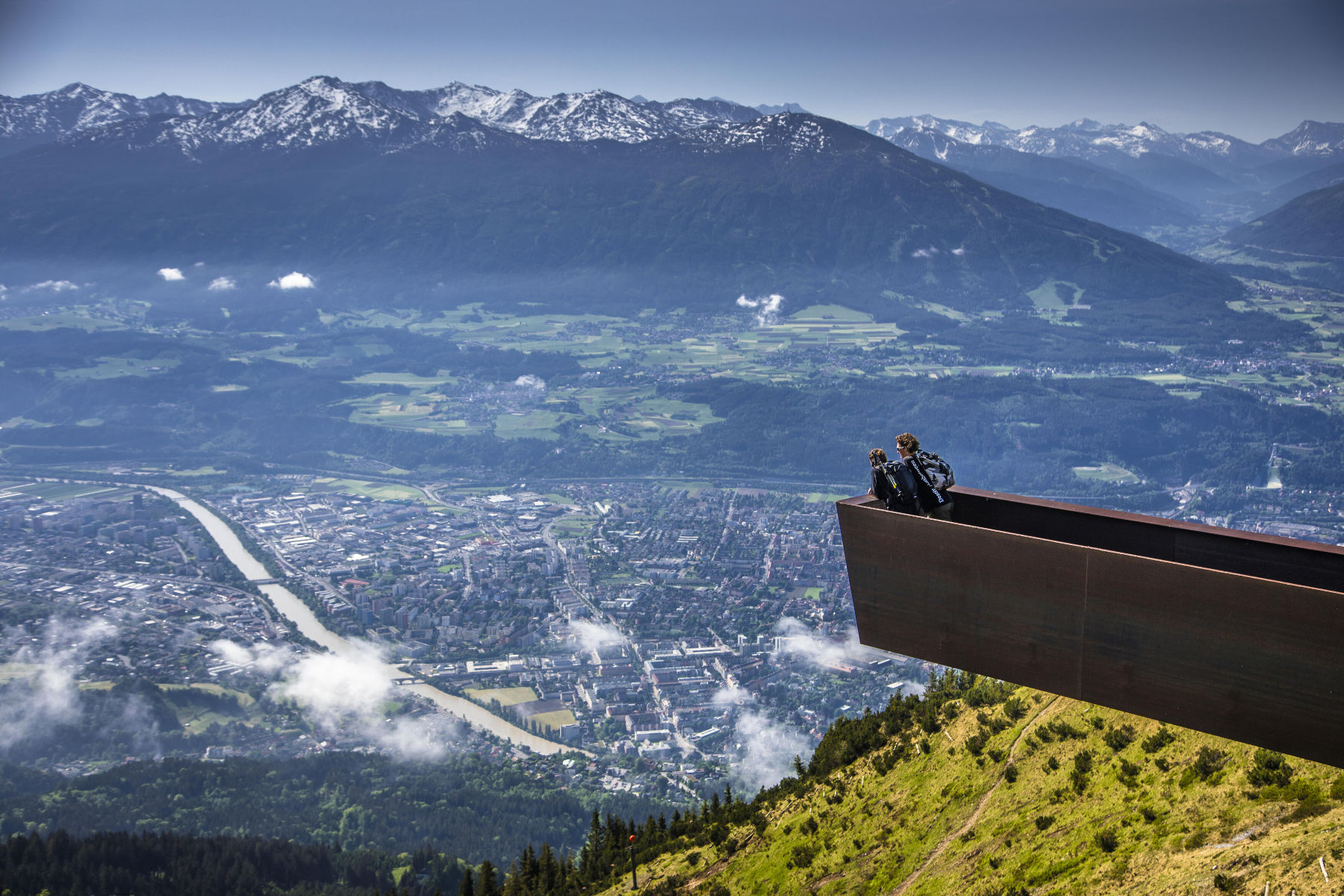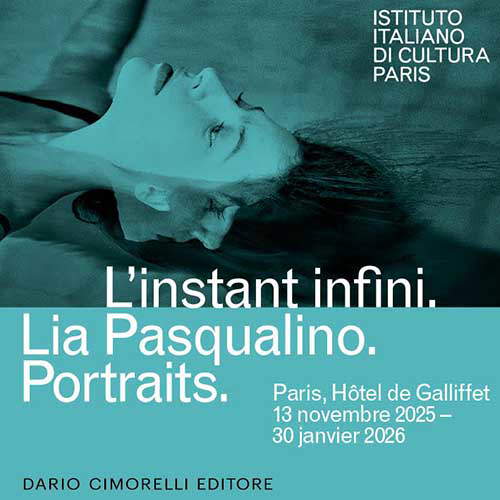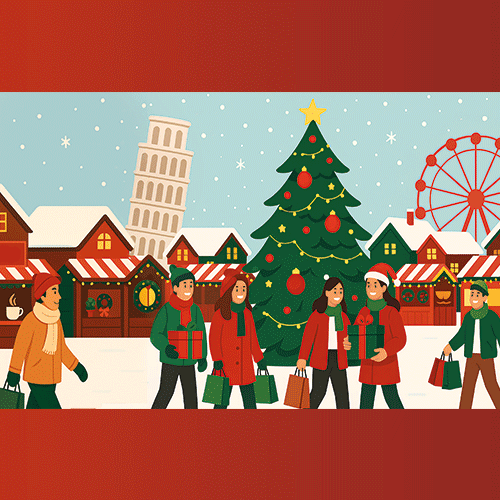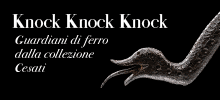
Austria, 10 contemporary architectures to see in and around Innsbruck
The region of Innsbruck, the center of Austria's Tyrol, surprises with its perfect balance of urban vibrancy and impressive Alpine scenery. As a result, it has become a land of... contemporary architecture. Here are 10 must-see contemporary architectural works, symbols of innovation and dialogue with the land.
By Noemi Capoccia | 17/08/2025 16:20
The Innsbruck region of Austria embodies a striking balance between the dynamic energy of urban life and the alpine environment that envelops the city. The region extends far beyond the Tyrolean capital, including more than 40 surrounding localities, each with different identities and atmospheres. In total, there are six areas that make up this well-rounded destination: the city proper, the Inntal valley, Kühtai with the Sellraintal, the Mieming Plateau, the southern area, and the western territory. In few other places is the transition from the cultural elegance of an old town to a scenic mountain trail so immediate: it only takes a few minutes to go from visiting city sights to hiking among the peaks.
The city of Innsbruck, capital of the Tyrol represents the first major Austrian center one encounters when crossing the Brenner Pass, about an hour and a half from Bolzano. The city also boasts a rich cultural heritage, the result of the influence of the Tyrolean counts and the Habsburg dynasty. And for those fascinated by contemporary architecture, there is no shortage of opportunities to marvel: here are 10 must-see buildings in the city of Innsbruck.
1. Zaha Hadid, the Bergisel Ski Jump.
At the entrance to Innsbruck, those arriving by car come across a structure that does not go unnoticed: the Bergisel Ski Jump. More than a sports facility, it is a bold architectural sign, conceived by Zaha Hadid. The building, completed in 2002, combines functionality and artistic vision: inside it coexists a ski-jumping ramp, a viewing terrace, and a hanging café with open views of the city and Alpine peaks. Its dynamic, sleek profile, reminiscent of the silhouette of an attack-ready cobra or stiletto heel, helped solidify the reputation of the Iraqi architect, who two years later would receive the Pritzker Prize, becoming the first woman to earn that honor.
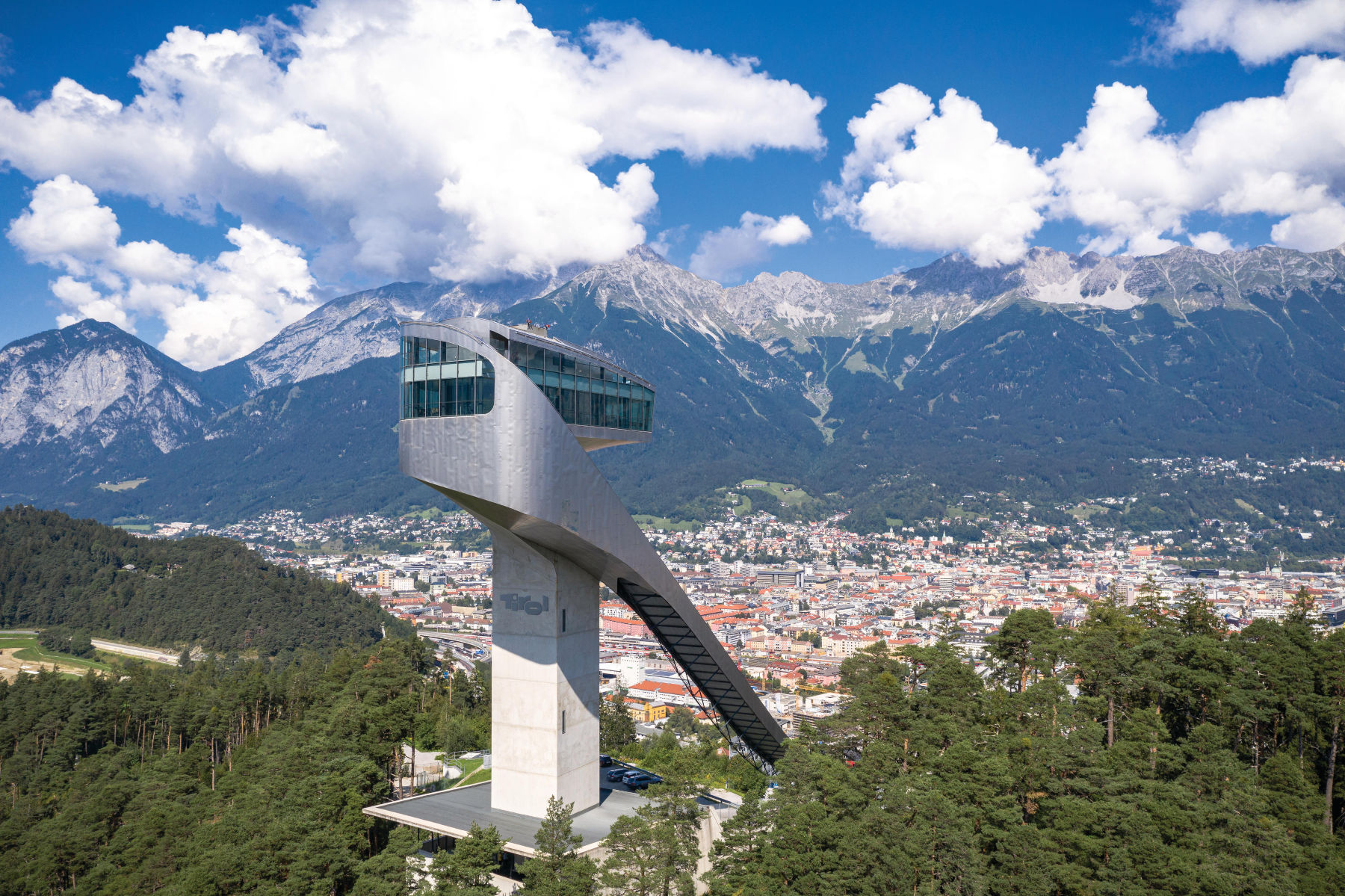
2. Zaha Hadid , Hungerburgbahn stations.
Also designed by Hadid, the Hungerburgbahn stations draw a connection to the landscape. Opened in 2007, they are distinguished by their smooth, undulating surfaces, inspired by the shapes of melting ice. The ensemble blends with its natural surroundings, returning a work that is both technical and poetic, internationally awarded for its bold lightness.
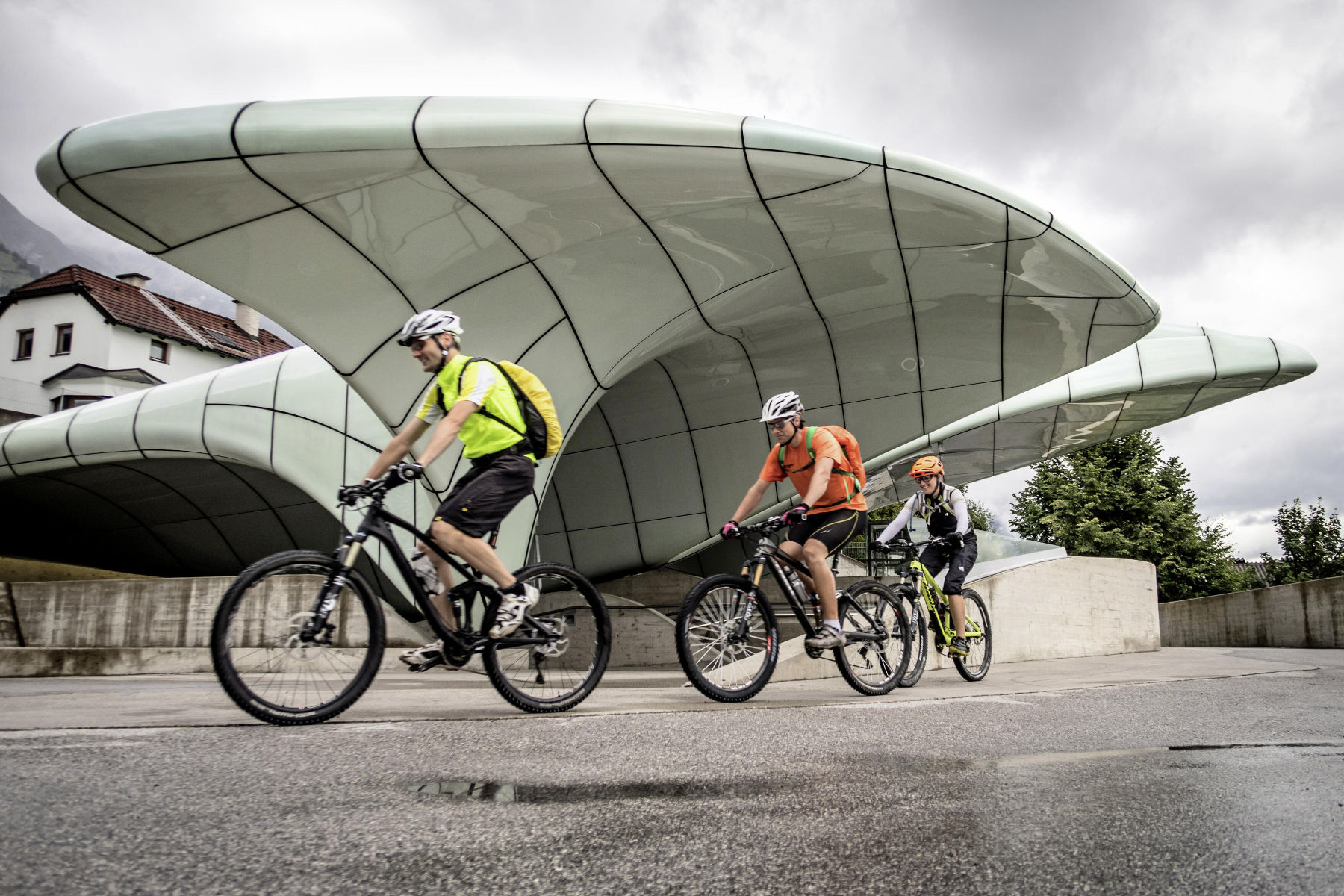
3. Dominique Perrault, the Rathausgalerien
In Innsbruck, the push toward the contemporary finds expression in projects that redefine the urban face without erasing its history. The Rathausgalerien, designed by French architect Dominique Perrault, demonstrates how architecture can dialogue with the past through transparencies and essential geometries. The building, which houses the town hall along with commercial spaces and restaurants, is distinguished by its large windows that capture and refract the alpine landscape. In the center of the courtyard, the polychrome glass roof created by painter and sculptor Daniel Burenaddsan artistic touch, filtering light in unexpected color plays. Ascending to the seventh floor, the 360° bar gives an all-around view of the city and surrounding peaks.
4. David Chipperfield, the Kaufhaus Tyrol.
No less well-known is the Kaufhaus Tyrol, designed by David Chipperfield. Here, clean lines and refined materials-glass, white concrete, and marble inserts-design a solid façade. Inside, the central atrium, flooded with natural light, opens up like a vertical plaza. Walkways and transparent elevators guide visitors through a dynamic architectural experience.
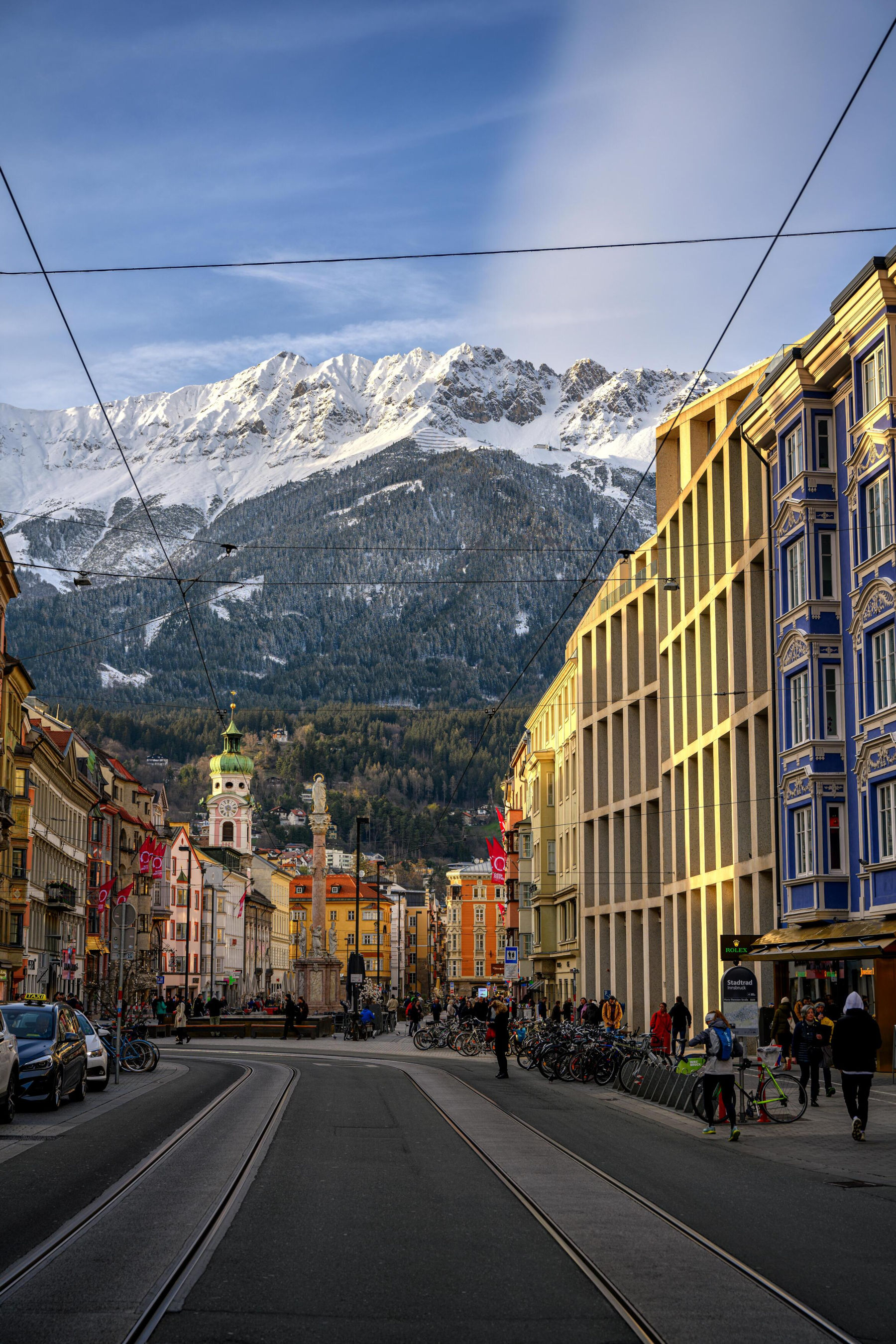
5. The Haus der Musik
The Haus der Musik represents a meeting point between architectural innovation and cultural vocation. Opened to the public in 2015, the structure replaced the old civic halls with a multifunctional center dedicated to music and entertainment. The façade, made entirely of glass, transforms with the changing natural light, alternating reflections, transparencies and shades that change its appearance throughout the day. The building fits between two symbols of the city, the Imperial Palace and the Tyrolean State Theater.
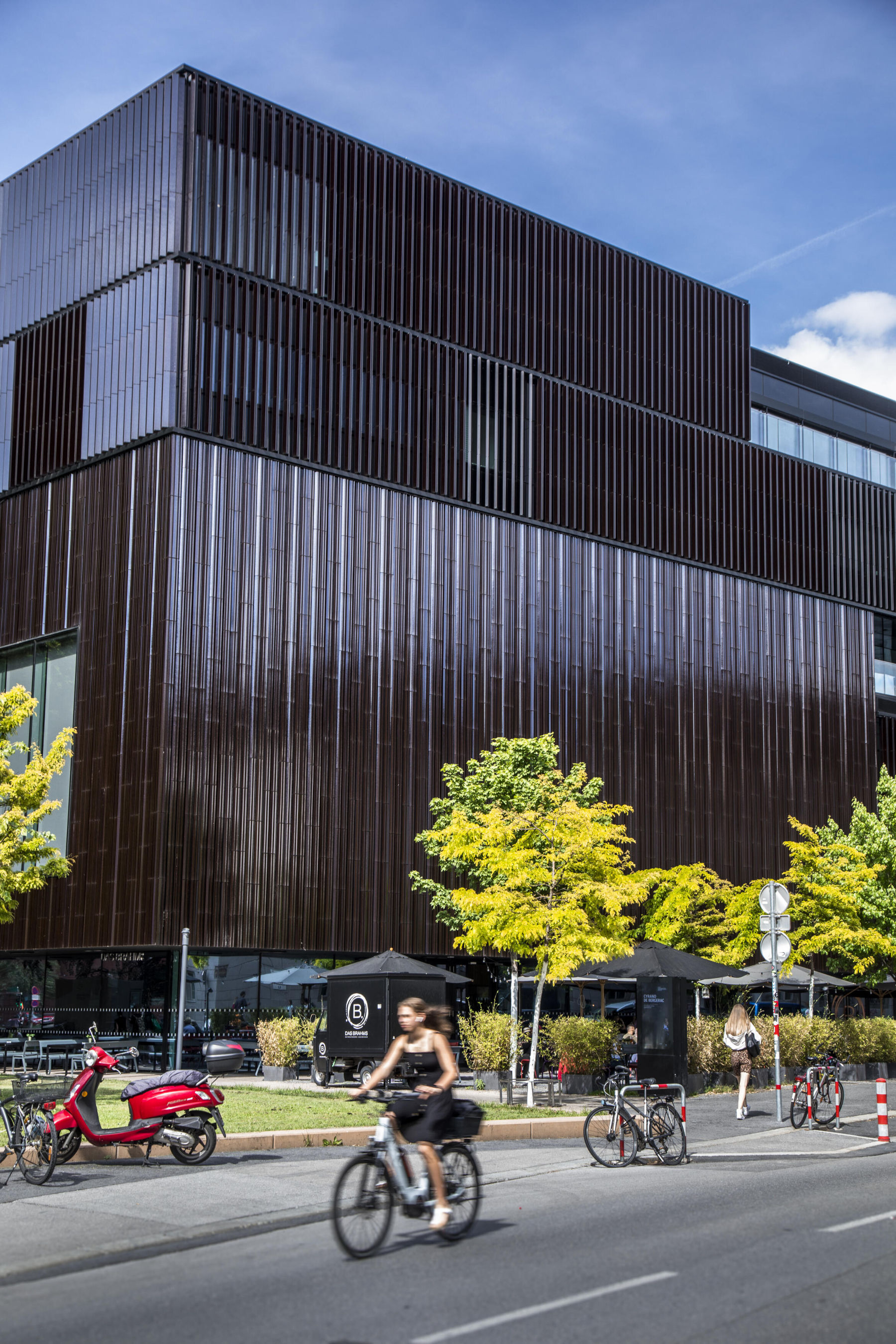
6. Johannes Wiesflecker and Rainer Schmidt, the Sparkassenplatz
The Sparkassenplatz (not far from the Haus der Musik) has become one of the most vibrant places in the center thanks to an intervention signed by architects Johannes Wiesflecker and Rainer Schmidt. The square, now enlivened by clubs, stores and meeting spaces, is distinguished by a light installation by Peter Sandbichler that changes hues day after day, creating an ever-changing atmosphere. Instead of traditional greenery, a vertical system of green grids houses alpine plants, reinterpreting the concept of urban nature.
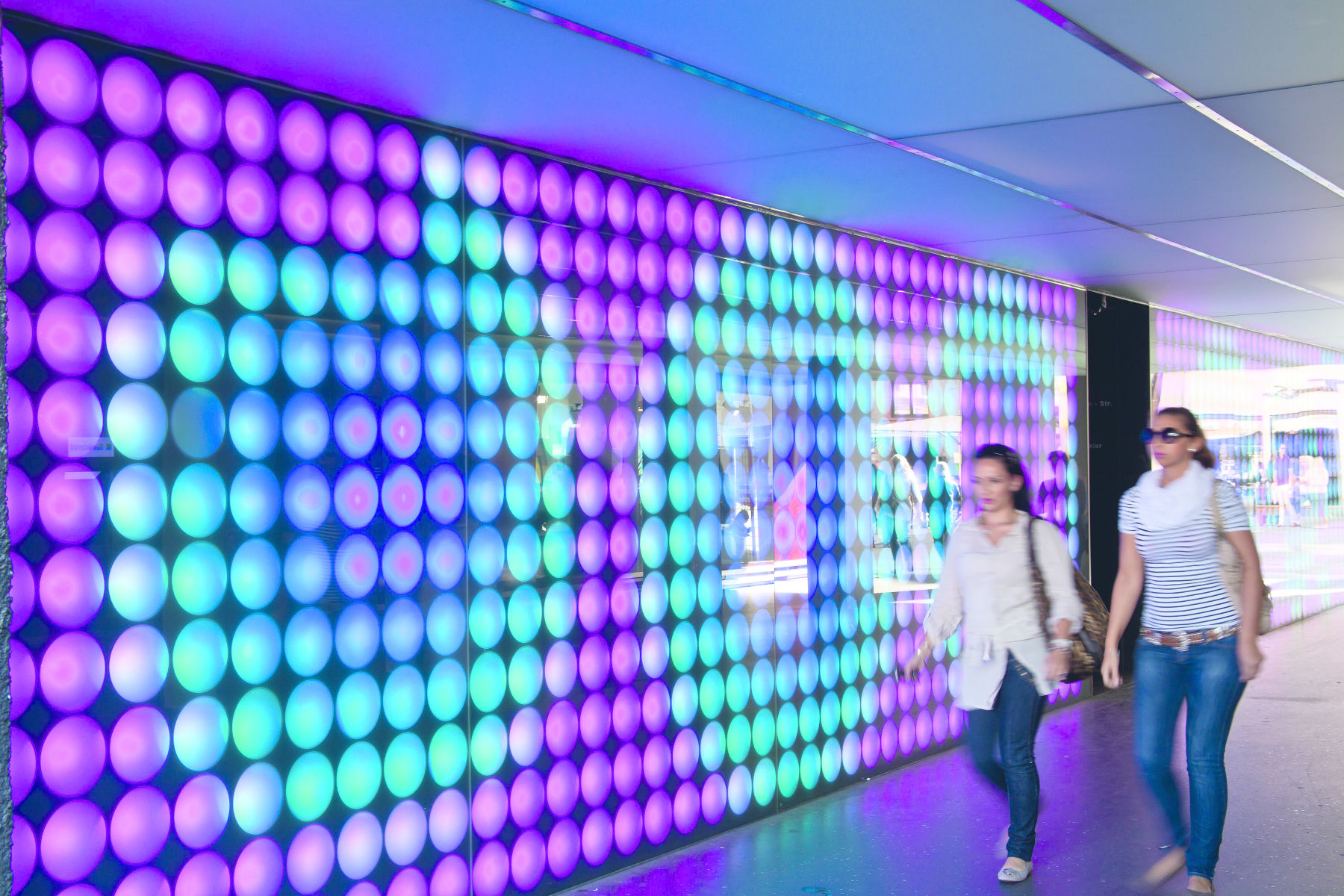
7. Heinz Tesar , the BTV Stadtforum.
In the historic center of Innsbruck, the BTV Stadtforum designed by Heinz Tesar catches the eye with its sculpted facade and angular tower that marks the corner of the building like an urban signal. Inside, spacious and bright rooms welcome both visitors and those who work there, while the 20-meter-high central hall stands out as a symbolic space: a vertical void designed to foster meetings, exchanges, and institutional representation.
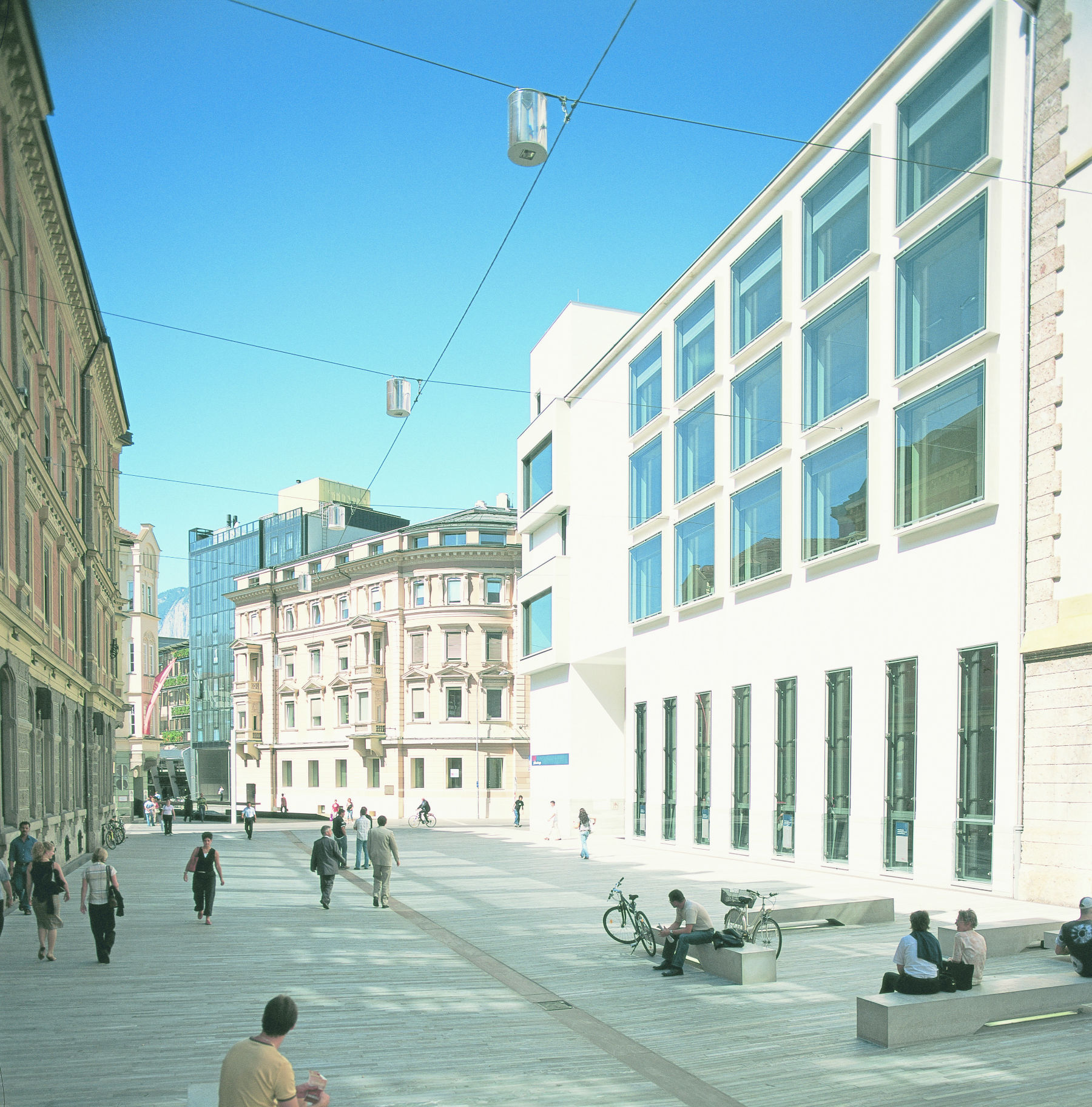
8. Rainer Köberl, Thomas Giner, Erich Wucher, Andreas Pfeifer, theformer Adambräu brewery.
Another example of successful architectural reuse can be found in theformer Adambräu brewery. The industrial complex was transformed in 2003-2004 into the headquarters of the aut. architektur und tirol center by the joint efforts of architects Rainer Köberl, Thomas Giner, Erich Wucher, and Andreas Pfeifer. While updating the building to meet new exhibition requirements, the project kept the strength of the original structure intact. A large glass wall was inserted into the old production hall, opening the space toward the train station and establishing a visual connection to the urban movement. Today the center hosts exhibitions, meetings and conferences that dedicated to the debate on contemporary architecture.
9. The Leben amSonnenhangne complex.
On the housing front, Innsbruck also shows a contemporary face. TheLeben amSonnenhangne housing complex is an eloquent example: devoid of right angles, it develops following a sinuous wave-like motion that recalls the curves of the surrounding landscape. Above all, its conformation is functional: in fact, each accommodation faces south, with large windows and balconies providing natural light throughout the day, strengthening the link between architecture and environment.
10. Snøhetta, the Perspectives Trail.
Among the most fascinating experiences around the city, the Perspectives Path, near Seegrube Station and designed by Norwegian studio Snøhetta, alternates panoramic views with installations that incorporate quotes from Ludwig Wittgenstein. The path combines philosophical thought, landscape, and design in a contemplative journey.
